Spring is such a treat. It is so full of unique and beautiful flowering trees and shrubs that it is hard to take it all in and really feel like you have enjoyed it before it fades into the green of summer. If you are a northern gardener, this is my list (with pictures) of flowering trees that are a little a little unexpected.
My own garden boasts a Cercis canadensis (Eastern Red bud) that is just about to burst open with flowers, a fall blooming Heptacodium miconioides (Seven Sons Tree), a gorgeous burgundy blooming crabapple of unknown variety, a hand full of voluptuous Pierus (andromeda) and a few “flowering weepers” (so-called by the previous owner who insisted that this was their proper name when I tried to get the bottom of their actual variety).
It’s a nice mix, but I’m a connoisseur of the out of the ordinary and special – I believe there are quite enough Bradford pears in my corner of the world and that I am doing no one any favors by planting more (plus their ubiquity and their habit of simultaneously falling apart and being invasive in many areas is also off putting).
Rather, I like to surprise and experiment, and with that in mind I have a lot of lists with a lot of constantly evolving plant ideas. These are my top picks for unique flowering trees that are above all else, unique and suited for northern gardeners.
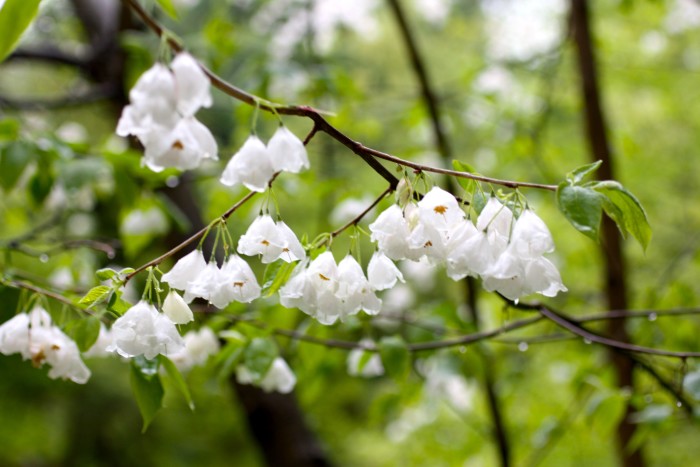
A list of unique flowering trees (with pictures!)
At the top of my ‘Spring flowering Tree List’ are the following:
(should I happen across one of these in the nursery at a good price it will surely find its way home with me)
Halesia (Davidia involucrata)
Halesia is such a delicate tree that reminds me the handkerchief tree (Davidia involucrata) (which I am similarly obsessed with). Halesia’s flowers are bell-shaped and it likes naturally acidic soil. I’d honestly take any variety. There are some that have larger flowers, some that are tinged pink and other interesting varieties. All I really care about is being able to stand beneath it and look up into the warren of pretty dangling flowers.
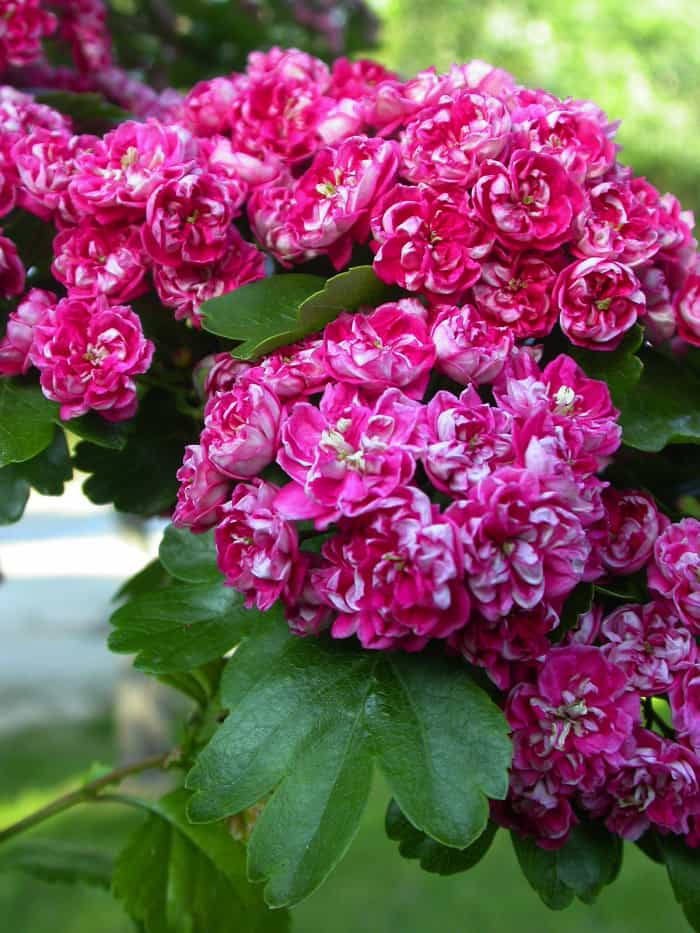
Unique rose flowering tree: Crataegus laevigata ‘Paul’s Scarlet’
Crataegus laevigata ‘Paul’s Scarlet’ was a flowering tree I fell in love with back in my London days. I lived in a street called Greencroft Gardens in West Hampstead and on the way to the tube station was a huge hawthorn across from a similarly large Ceanothus.
The two were such focal points for the whole road, my husband and I couldn’t help but remark about them daily. At the time I was unfamiliar with the Hawthorn and had no idea what it was – I called it the giant mini rose tree (as the clustered flowers are just like roses and literally cover the tree).
I wish cell phones with cameras were a thing back then – I’d have hundreds of pictures of this flowering tree (an others on this list – and all their extraordinary flowers).
I’ve never seen one here in New England I’d consider it quite a find to discover one.

Early spring flowering tree: Redbud (Cercis Canadensis)
Yes, I know – I already said I have one, but I love this tree so much that I’d take dozens.
A little tip that I have learned the hard way — don’t try to transplant a Redbud outside of the spring season. They seriously don’t like it and will die. If you want one of these get it early in the season or else wait until the next year.
End of season (Fall) sales on Redbud trees is a sure sign of nursery that doesn’t really care what happens to your plants after they leave the shop (don’t buy them – your odds of successful transplanting are dismally low – it’s not you – it’s the tree).
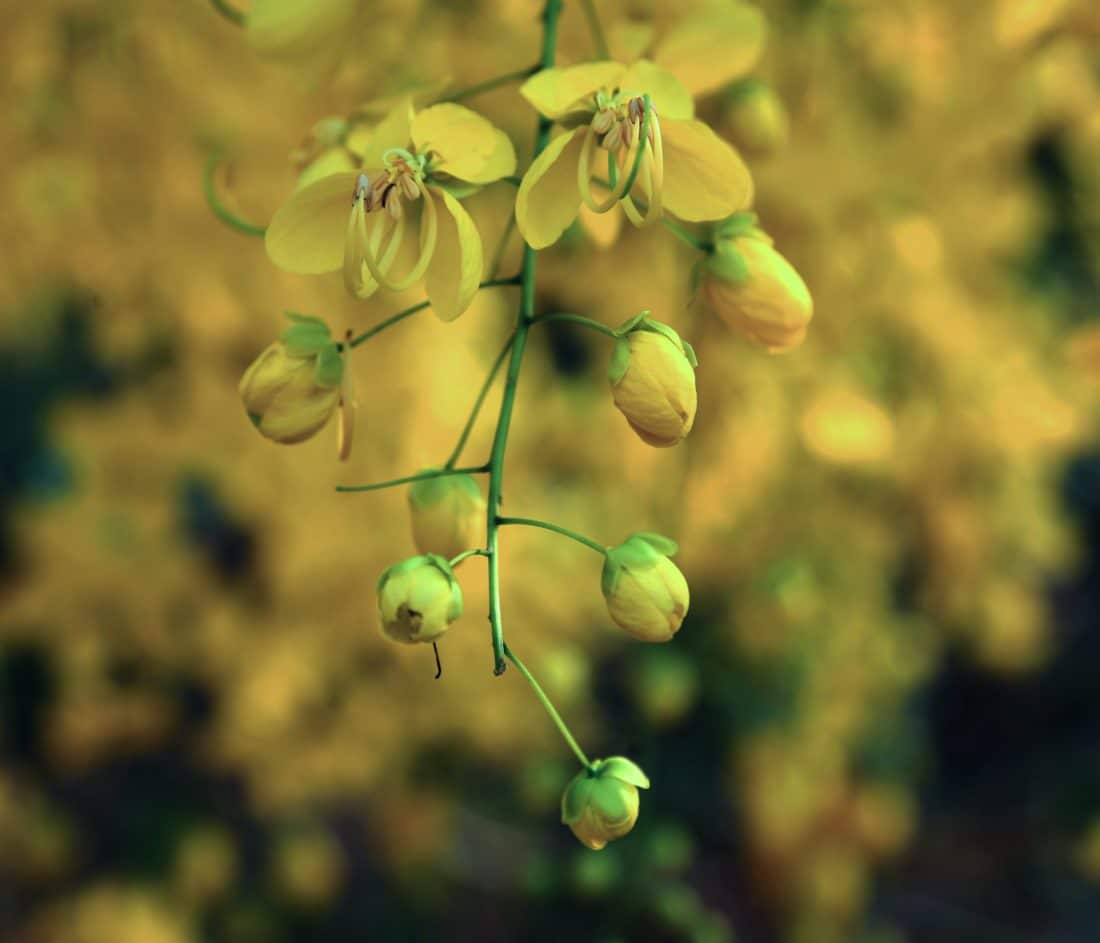
Laburnum anagyroides
Laburnum anagyroides has a relatively small growing range (zone 5 – 7) and I happily happen to fall within that. It makes me wonder why I don’t see these more often? The flowers are similar to those of wisteria but are bright yellow and it is possible that their reputation as being poisonous is what makes them less than popular. Adding one of these unique flowering trees is a great way to give your garden a special touch.
The question of poisonous-ness has however been questioned. There is no evidence in the last 100 years that anyone has ever died from ingesting the seeds. There’s a legend that if you dream about this tree, then adversity around you will be overcome by vigorous application of intelligent effort. I love these kind of practical legends….I think it is the German in me. (Don’t count on anything too magical – just pure hard work and smarts.)
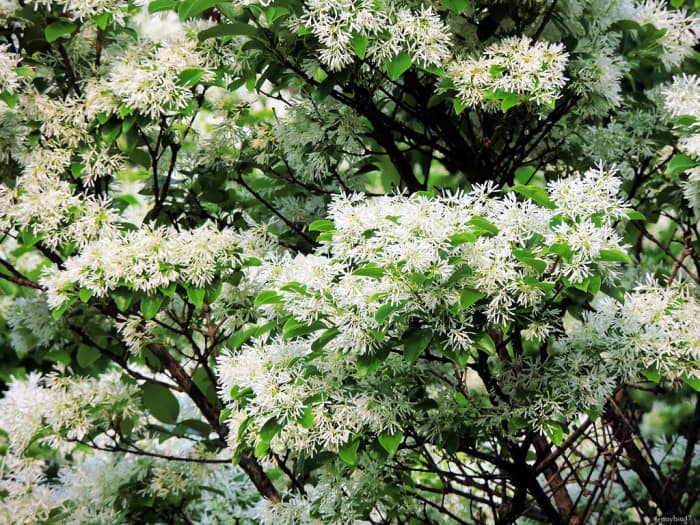
Chionanthus virginicus (Fringe Tree or Old Man’s Beard)
Old Man’s Beard is a small tree/large shrub with a unique flower. Rather than blooms with faces it has blooms that resemble a fringe or a scruffy beard. (hence the obvious common names). The airy appearance reminds me of a smoketree (cotinus croggygria). But the smell is what is also drawing me in (and it also that it likes acid soil!).
Have I missed any obscure favorites of yours? Or maybe you have discovered something new? Let me know — as I said — my list is constantly evolving.
List of flowering trees with pictures – Related Posts:
New Shrubs for the Cutting Garden
How to Place and Plant Tree – Seven Things that Most People Don’t Consider
SHARE THIS POST:
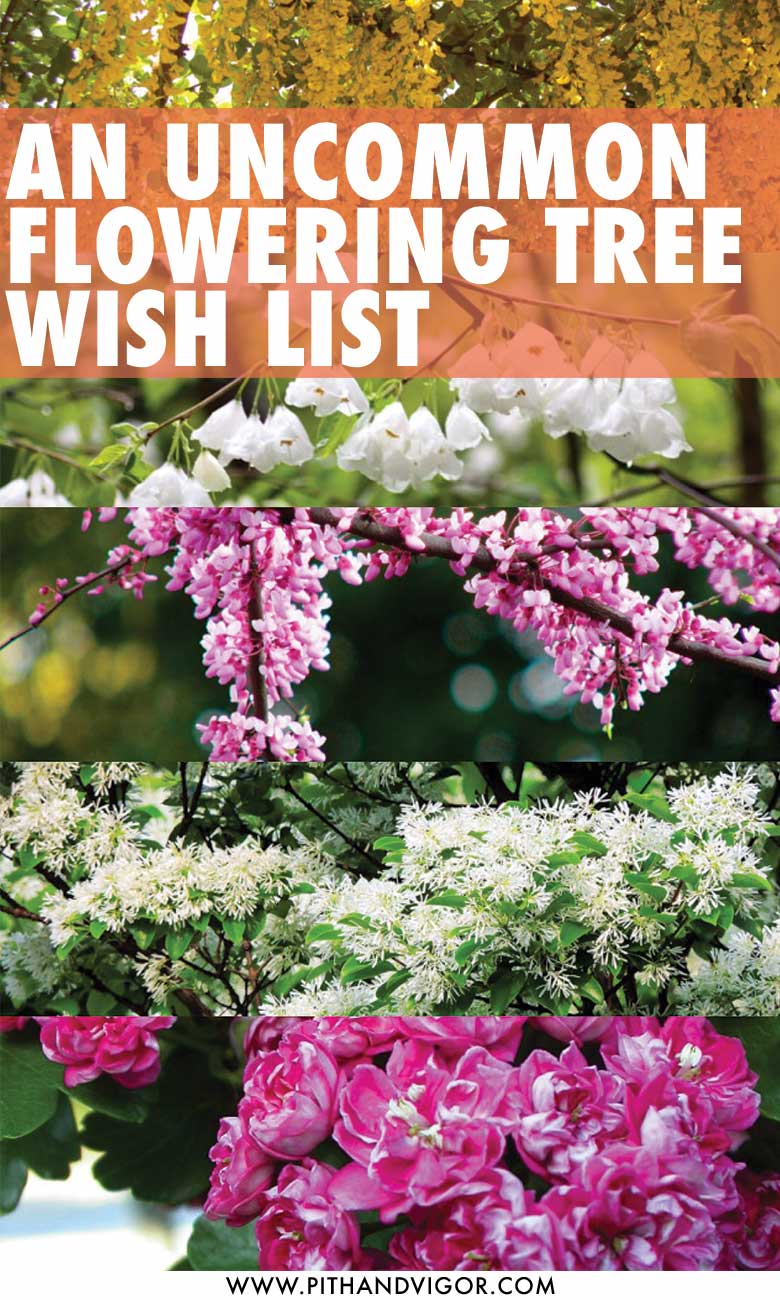
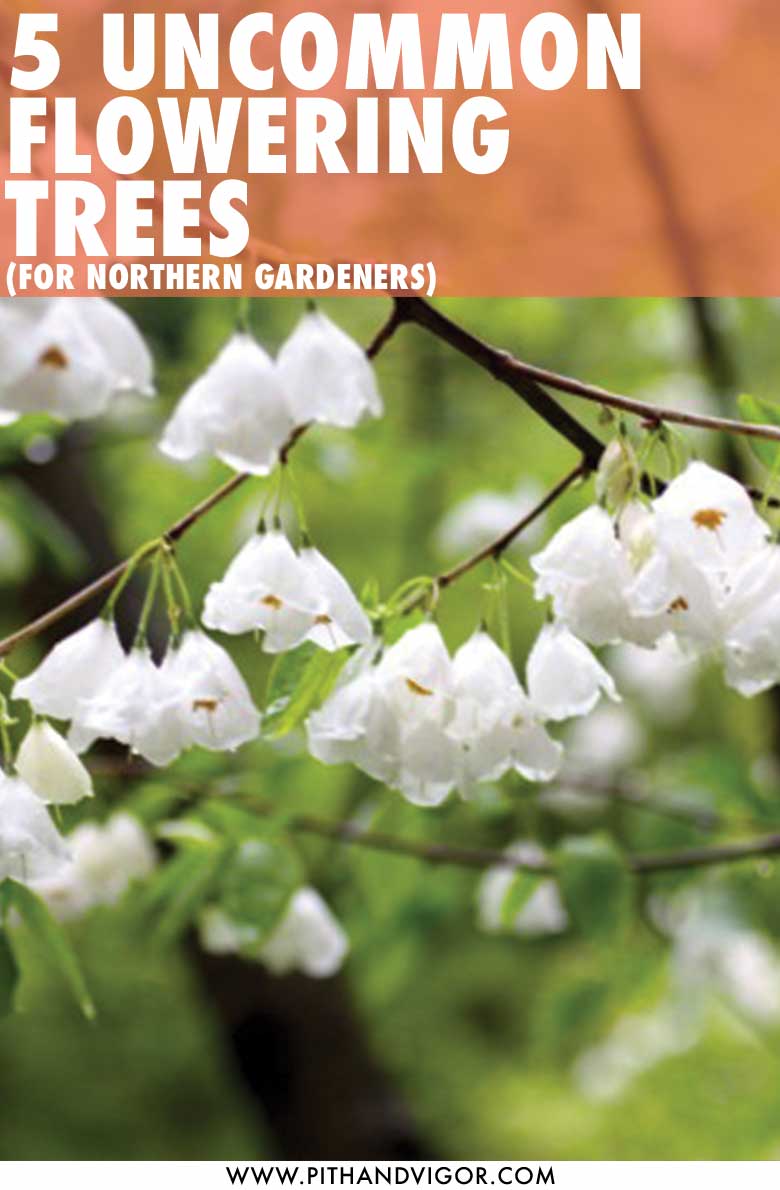
images: Halesia by Rochelle Greayer,, , Fringe Tree by Jenny Hsu (CC – ND – NC)
I’ve never heard your tip about redbuds before and am interested in hearing more about that. I’ve always thought fall is the best time to plant woodies but that anytime was okay as long as you were willing to commit to sufficient irrigation.
I think the Chionanthus pictured is actually C. retusus – also a delightful small tree, but with tighter flower clusters. We are lucky enough to have Chionanthus virginicus native to our home woods and babies are popping up along the woodline!
Paul – I came across the redbud knowledge by way of one the tree experts at Cavicchio’s (one of the biggest plant wholesalers in New England). After having a couple of unsuccessful plantings (that took place outside of the spring season) he filled me in on this tip. It is quite redbud specific – other trees/woodies do not have this issue. My (fairly extensive but anecdotal) evidence supports his claim that you should only transplant redbuds in the spring.
Thanks for the info and the qualifier! I visited Cavicchio’s a few years ago when the PPA was in Boston. It was very impressive and absolutely lived up to their terrific industry reputation. Thanks again 🙂
Rochelle, consider adding a Styrax japonicus to your list. Several named varieties from which to choose. Well behaved small tree, very fragrant blossoms. A bench beneath, beverage in hand, warm spring sunshine…bliss!
i simply love Laburnum anagyroides. Their yellow color looks awesome on a sunny day. Just a bit scare of the poison.
These are BEAUTIFUL pictures! Thanks for sharing!